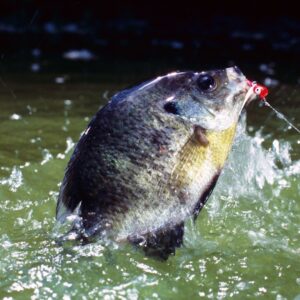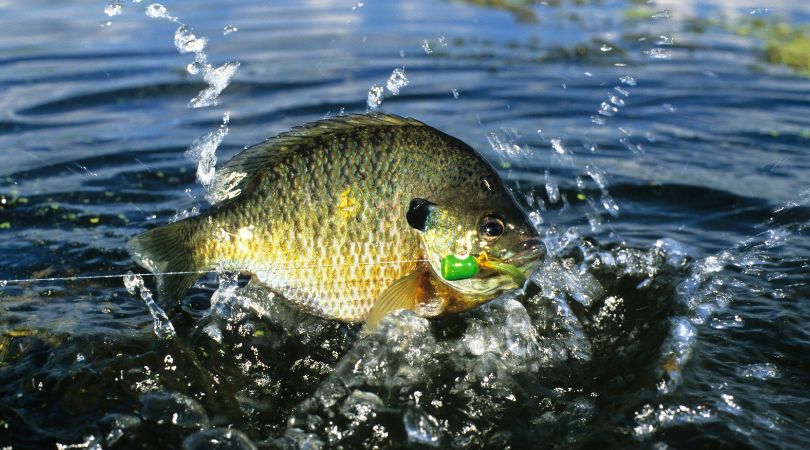When it comes to identifying different species of fish, it can sometimes be challenging to distinguish between similar-looking species. One common confusion among anglers and fishing enthusiasts is telling the difference between bluegill vs sunfish, while both belong to the same family and share some physical characteristics, there are a few key differences that can help you tell them apart. In this article, we will explore three main points to help you identify whether you’ve caught a sunfish or bluegill.
1) Body Shape and Coloration:
 One of the first aspects to observe when differentiating between a sunfish and a bluegill is their body shape and coloration. Bluegills have a somewhat oval-shaped body with a laterally compressed appearance, which means they are more flattened from side to side. On the other hand, sunfish tend to have a more rounded body shape. Additionally, bluegills usually have dark olive-green coloration on their back, transitioning to a lighter yellowish-green or silver on their sides, often accompanied by a distinct dark spot at the rear of their dorsal fin. Sunfish, on the other hand, display a more vibrant coloration, with a mix of blue, green, and orange hues on their body.
One of the first aspects to observe when differentiating between a sunfish and a bluegill is their body shape and coloration. Bluegills have a somewhat oval-shaped body with a laterally compressed appearance, which means they are more flattened from side to side. On the other hand, sunfish tend to have a more rounded body shape. Additionally, bluegills usually have dark olive-green coloration on their back, transitioning to a lighter yellowish-green or silver on their sides, often accompanied by a distinct dark spot at the rear of their dorsal fin. Sunfish, on the other hand, display a more vibrant coloration, with a mix of blue, green, and orange hues on their body.
2) Fin Size and Shape:
Examining the fins can also provide valuable clues to help distinguish between a sunfish and a bluegill. Bluegills have a relatively large and elongated pectoral fin, which extends beyond the eye when folded against the body. In contrast, sunfish typically have smaller and rounder pectoral fins that do not reach the eye. Furthermore, the dorsal fin of bluegill is usually tall and elongated, while the dorsal fin of a sunfish is shorter and more rounded.
 3) Habitat and Behavior:
3) Habitat and Behavior:
Another useful way to differentiate between sunfish and bluegills is by considering their habitat and behavior. Bluegills are commonly found in lakes, ponds, and slow-moving rivers, where they tend to inhabit areas with vegetation and underwater structures. They are known to be relatively social fish, often forming schools and feeding near the water’s surface. Sunfish, on the other hand, are more adaptable and can thrive in a broader range of habitats, including lakes, ponds, rivers, and even brackish water. They tend to prefer areas with vegetation or cover but can also be found in deeper waters. Sunfish are generally more aggressive and territorial, often defending their nests during the breeding season.
In conclusion, although sunfish and bluegills share some similarities, paying attention to their body shape, coloration, fin characteristics, habitat, and behavior can help you differentiate between the two. Bluegills have an oval-shaped body, dark olive-green coloration, elongated pectoral fins, and tall dorsal fins, while sunfish have a rounder body shape, vibrant coloration, shorter pectoral fins, and rounded dorsal fins. Considering these points will allow you to identify whether you’ve caught a sunfish or bluegill, enhancing your fishing experience and knowledge of these fascinating fish species.

